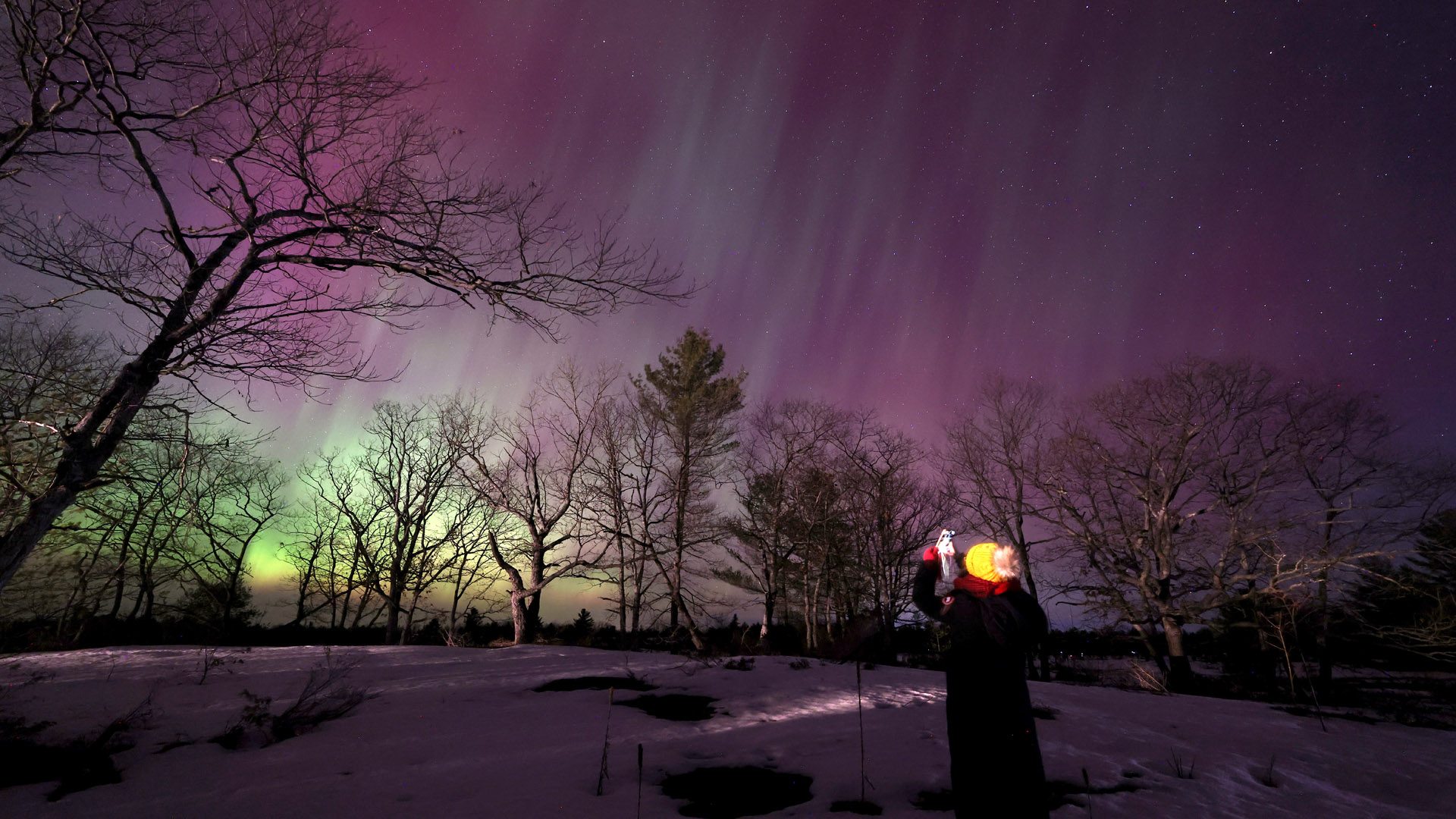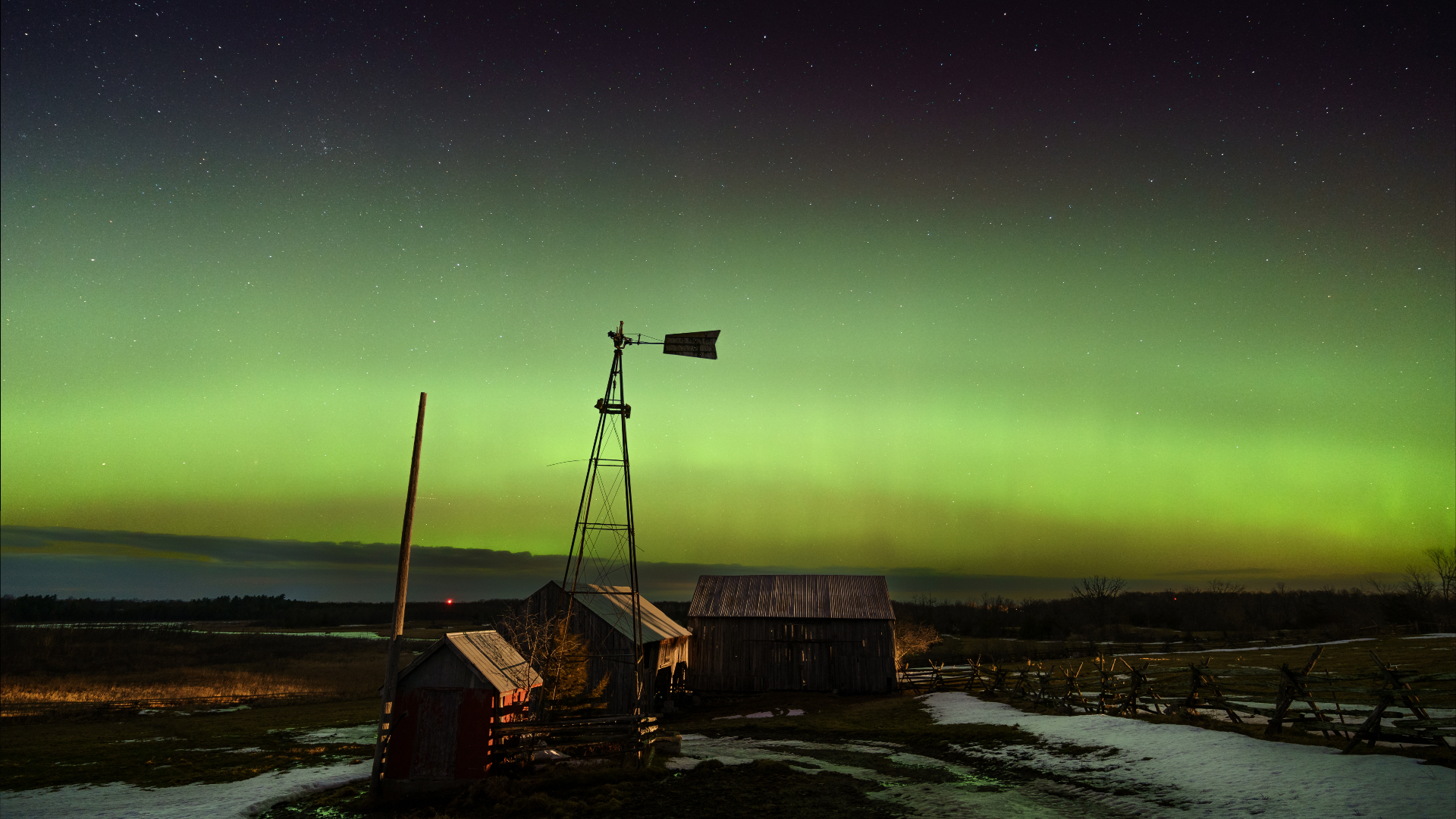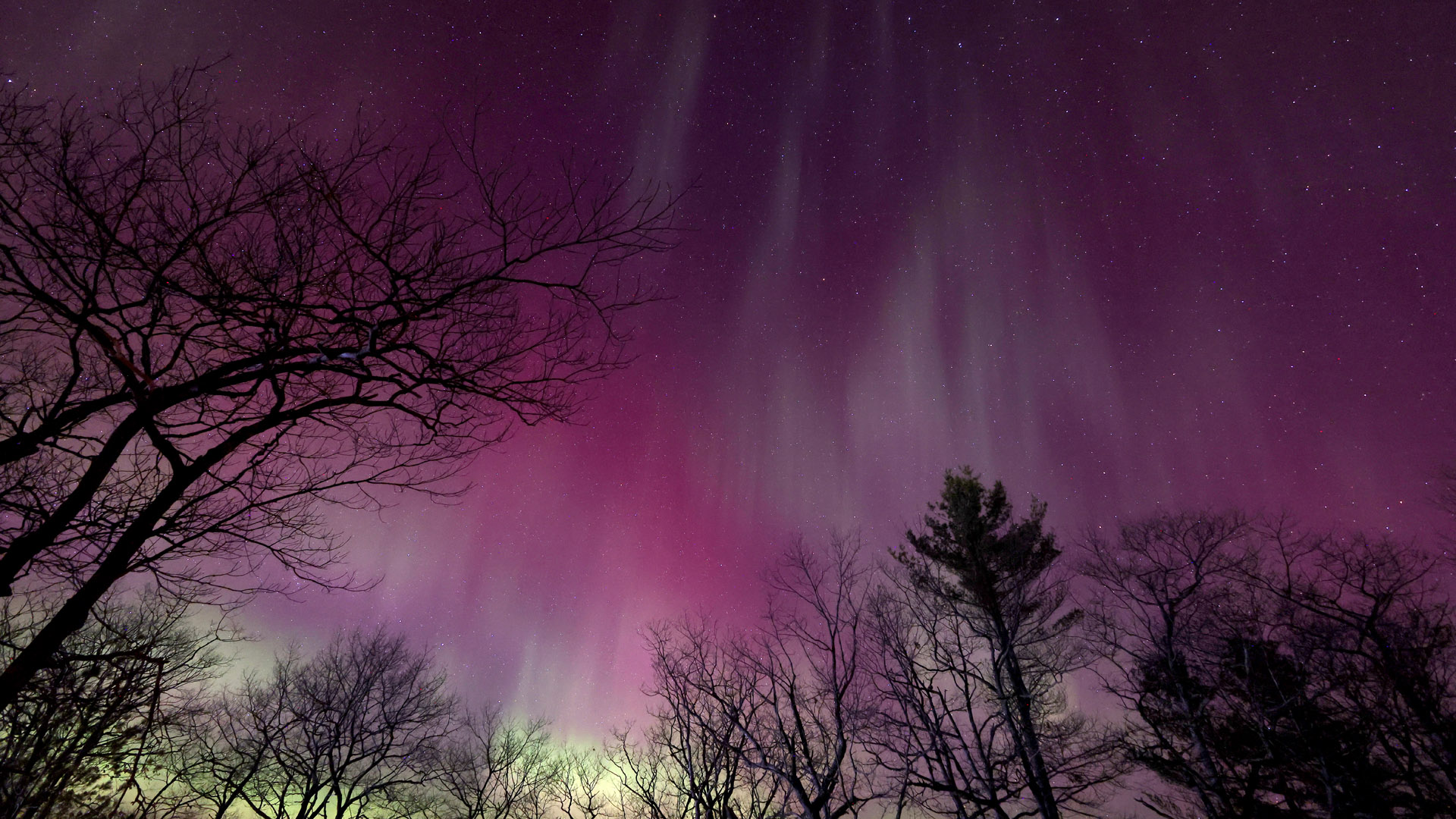Skywatchers enjoy surprise auroras as strongest solar storm in years hits Earth (photos)
Space weather forecasters didn't have a clue that such a powerful storm was coming.

A surprise solar storm supercharged auroras across the U.S. and Europe last night (March 23), with sightings of the colorful displays reported from as far south as New Mexico and Arizona.
The storm, classified as a severe G4 on the 5-grade scale used by the U.S. National Oceanic and Atmospheric Administration (NOAA), even forced Rocket Lab to delay a launch of its Electron rocket for 90 minutes. Oddly, space weather forecasters didn't see the storm coming, as it was caused by a stealthy solar eruption.
While the most stunning polar light images came from the usual aurora haunts in Canada, northern Europe and Alaska, ingenious photographers equipped with sensitive cameras were also able to capture the mesmerizing light shows at rather unusual locations at much lower latitudes.
Related: Where to see the northern lights: 2023 aurora borealis guide
Photographer Lauren Thompson took to Twitter to share a series of surprise snaps taken during a night of aurora chasing in New Mexico.
"I can’t believe we are seeing this in New Mexico! Currently somewhere between Pecos and Las Vegas!" she said in one tweet.
I can’t believe we are seeing this in New Mexico! Currently somewhere between Pecos and Las Vegas! pic.twitter.com/iXHIn4Msa3March 24, 2023
Thompson wasn't alone in this southern state to report aurora sightings. Award-winning storm chaser and weather photographer Tim Baca shared his own shot of a fiery wall of red glow emerging above the horizon.
Get the Space.com Newsletter
Breaking space news, the latest updates on rocket launches, skywatching events and more!
"Central New Mexico Northern lights right now!," he said in the tweet.
Central New Mexico Northern lights right now! #northernlights #AuroraBorealis #nmwx pic.twitter.com/tqisbpyKxzMarch 24, 2023
Photographers in Arizona, North Carolina and Oklahoma also captured aurora displays, and so did many across the northern states.
"Best night of my life. Near Watertown, South Dakota," tweeted Alex Resel.
Auroras are triggered by interactions between charged particles streaming from the sun in the form of solar wind and molecules in Earth's atmosphere. Because the planet's magnetic field lines funnel the solar particles toward the poles, most aurora displays are only visible at very high latitudes. However, when powerful bursts of solar wind hit the planet at once, such as those released during expulsions of plasma known as coronal mass ejections, auroras can spill over significantly in the direction of the equator. During the most intense solar storms in recorded history, for example, aurora sightings were reported as far south as the Bahamas.



Space weather forecasters originally predicted a moderate G2 geomagnetic storm to occur on March 23 and March 24. Such a storm would have invigorated auroras mostly at rather high latitudes. That prediction was based on flows of fast solar wind that forecasters knew were emanating from an opening in the sun's magnetic field known as a coronal hole. The G4 storm that arrived instead was the most powerful geomagnetic storm of the current solar cycle, the 11-year ebb and flow in the generation of sunspots, flares and eruptions.
This solar cycle, the 25th since records began, will reach its maximum in two years, which means we are likely heading into a period of more intense solar storms and therefore more breathtaking aurora displays.
Geomagnetic storms, however, are not always a treat to humans. The more intense ones can cause power blackouts and severely affect operations of orbiting satellites.
Follow Tereza Pultarova on Twitter @TerezaPultarova. Follow us on Twitter @Spacedotcom and on Facebook.
Join our Space Forums to keep talking space on the latest missions, night sky and more! And if you have a news tip, correction or comment, let us know at: community@space.com.

Tereza is a London-based science and technology journalist, aspiring fiction writer and amateur gymnast. Originally from Prague, the Czech Republic, she spent the first seven years of her career working as a reporter, script-writer and presenter for various TV programmes of the Czech Public Service Television. She later took a career break to pursue further education and added a Master's in Science from the International Space University, France, to her Bachelor's in Journalism and Master's in Cultural Anthropology from Prague's Charles University. She worked as a reporter at the Engineering and Technology magazine, freelanced for a range of publications including Live Science, Space.com, Professional Engineering, Via Satellite and Space News and served as a maternity cover science editor at the European Space Agency.
-
Atlan0001 Yep! A hundred to a thousand times the power of the 1859 "Carrington Event." Just lucky it occurred on the other side of the sun from us, or we would have been in a mess of a mass extinction event of our electronics, especially our computerized electronics, world-wide: Thus, the death of a good part of the world's population so dependent upon electronics for literally everything today; literally for life itself today. Symbiotic(!), if you will.Reply
Yep, life needs to break out, expand out, from the Earth ASAP. Life needs to spread out into the Solar System in island space Arks of dozens to hundreds, to thousands, to millions of manmade space colonies and other facilitations, for its continuing survival and prosperity. Just the same as it broke out, expanded out, spread out, from an Earthly mudhole billions of years ago for the same reason. Just as life leaves the egg, the womb, for the same reason -
bwana4swahili It was one of the best Aurora displays I've seen in the past couple of years.Reply
https://flic.kr/s/aHBqjAx2vC










